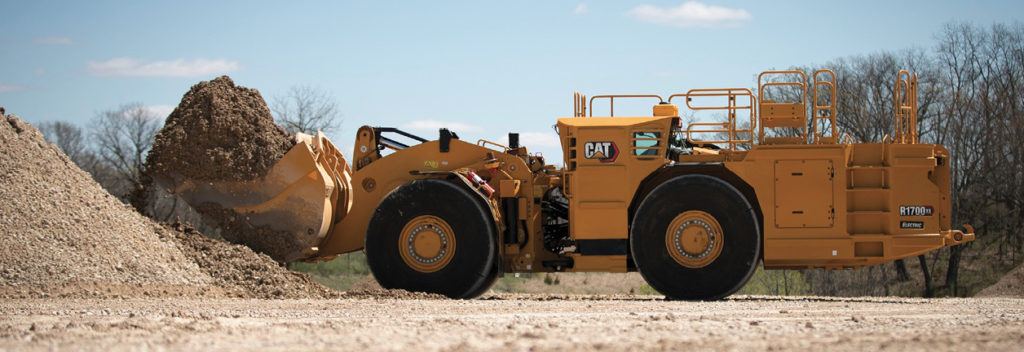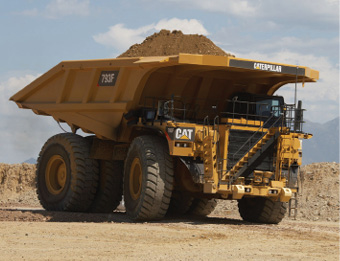The new age of productivity and sustainability

Change is constant, and its pace seems to be ever accelerating. In the mining industry, it is widespread – from the types of deposits, mining methods, mining equipment, maintenance strategies – supported by the advancement of technology. The change that is currently having a major influence on everything we do in mining, however, is in how we value environmental and social governance. Sustainability is everyone’s responsibility, and the mining industry is no exception – in fact, mining could be a continued leader in ESG (environmental, social, and governance). There is no doubt that mining is necessary more than ever, and tackling the challenges associated with responsible mining are much easier when we work together.
The media is full of stories about EVs, electric developments, and new prototypes. In the industry, we have already seen the adoption of smaller scale electric vehicles, as well as mining operations utilizing existing electrification technologies including AC (alternating current) powered equipment and hybrid drivetrains. In underground mining specifically, battery electric vehicles (BEVs) are already changing the game by eliminating diesel emissions and enabling operations to work at more extreme depths, all while reducing overall ventilation costs.
But let us think bigger, much bigger! Now, we are seeing innovation in battery electric technology in heavy duty mining trucks and machinery. Electrification in mining is coming, and it is crucial that mining operations can learn and implement the latest developments as new advancements in decarbonization technology evolve. With many years of mining experience, we are privileged to be part of the technology revolution in mining equipment. The possibilities with electrification are especially exciting. Our focus is on partnerships – working with customers on finding solutions that fit their dynamic and challenging environments, all while aiming to keep pace with emissions reduction targets.

What has become clear early on is that no “one” solution will work for all. Each site may have its own unique carbon reduction system that fits its application and timeline. When putting advanced BEVsinto the most challenging conditions, it is important to collaborate throughout the entire process and share the findings – both the successes and the challenges. Change management and adapting to this innovative technology and equipment are equally important and learning to optimize and implement into it in your operation.
How do you bridge the gap?
Today, the mining industry is in a middle ground, executing the present operation while looking to the future. Before a total shift to net-zero mining with future technologies, it is critical that we make the best use of what we do have at our disposal to minimize our environmental footprint until the technology catches up. This is where partnerships and transparency are key, and it all starts with a conversation. It is about being realistic on where we are today, where we can get to tomorrow, and where we want to be in the future.
Realistically, many miners will not be able to implement electrification or decarbonization technologies for one reason or another – economic feasibility, timelines, application, etc. However, every operation can make the conscious effort to be a responsible miner. As the saying goes “you cannot improve what you do not measure.” The industry standard measure to focus on is carbon intensity – how many greenhouse gasses (GHG) were produced for every tonne of production?
Understanding how we can influence this metric is key. It is about striking a balance between keeping production as high as possible, while keeping GHG emissions as low as possible. So, what can you do today to improve carbon intensity? Some here and now solutions to bridge the gap include the following:
Rolling resistance: Reducing haul road rolling resistance has multiple benefits like boosting truck speed and production, which helps to cut fuel consumption and emissions, while reducing maintenance costs. It is important to establish a standard for haul roads, specifying road materials, ramp grades, super-elevations, and road crowns. Well-maintained haul roads not only lower carbon emissions but also decrease the overall cost per tonne.
Proper maintenance and machine specification: Following the recommended maintenance guidelines by original equipment manufacturers (OEMs), particularly for engines, are essential. This involves using the appropriate oils for each season, adhering to maintenance intervals, and updating equipment with the latest fuel mapping or software to enhance fuel efficiency.
Lower haul truck tare weight: Lowering the weight of haul trucks increases the target payload, that results in improved production and reduced fuel consumption. Some considerations include utilizing lightweight truck bodies, rims, and tires, diligent washing practices, and carefully considering machine specifications and add-ons.
Improve operational efficiency: To enhance operational efficiency, implementing autonomous haulage systems is highly advantageous. But, if you are not using such systems, having a structured hot change protocol during shift changes or breaks is important for minimizing idle time. Tracking idle time is also key for monitoring and improving overall efficiency.
Renewable diesel, biodiesel, and additives: Lower carbon fuels like renewable diesel, biodiesel, and additives are demonstrating the potential to lower overall emissions. Supply of large volumes of renewable diesel and biodiesel has been a concern in the past; however, suppliers are ramping up production for these emission-reduction diesel alternatives, making them a viable opportunity for mining operations.
Many miners and earthmovers are practicing these tips today. Focusing on these tips to improve carbon intensity will also have beneficial side effects on overall cost per tonne, and these tips are necessary steps to support future electrification machines – it is really a win-win-win scenario.
Walk before you run: This is not a rush to market
Decarbonization is not a quick process. It is a “walk before you run” challenge, taken one piece of equipment at a time. A move to net-zero mining will have an enormous impact on operations, with lots to discover with how it will function in our operations. Starting small scale and through constant learning and adapting, we can accommodate the technology into our operations.
The investment and change management component of a transition to net-zero can be significant, so that is why thinking about the transition sooner, rather than later is important. Advanced planning and understanding how to efficiently implement these solutions, and when, will be critical. Some important considerations include the following:
> Mine plan and design: Specific focus on haul road length, width, and longevity to assess the feasibility of charging while moving.
> Fleet strategy: Understanding where your truck fleet is in its life cycle, how it lines up with current battery electric production timelines, and the trade-offs between replacing fleets versus rebuilding legacy fleets.
> Power infrastructure: As well as engaging early in conversations to understand what the operations peak power requirements will be, what access to this power will look like, and what impact this will have on the grid.
> Battery storage and recycling: Understanding the safety and regulations of battery storage and handling, determining a battery recycling strategy, and planning for the site infrastructure.
> Employee training and skills: Extensive training and technical knowledge is required across the workforce, including technicians, operators, management. This will represent a generational workforce shift.
> Mine regulations and safety: Partnering with regulatory entities to develop guidelines to ensure proper safety protocols are established and adhered to within mining operations.
Looking to the future
As we transition to sustainable mining, in sharing our visions and expectations between OEMs and mining operations, we can begin planning and developing the path to net-zero mining. The biggest opportunity today is starting the conversation, having transparent communication, and open sharing of knowledge. The future is coming faster than some might expect – equipment OEMs are prototyping and trialing their early learner electrified machines in the next few years, with production following shortly after. Electrification in mining is a growing industry, and it is forging great working partnerships for an exciting future. CMJ
Cayce Kerr is the director of mining marketing commercial, and Mitchell Barbar is industry manager at Finning Canada.
Comments